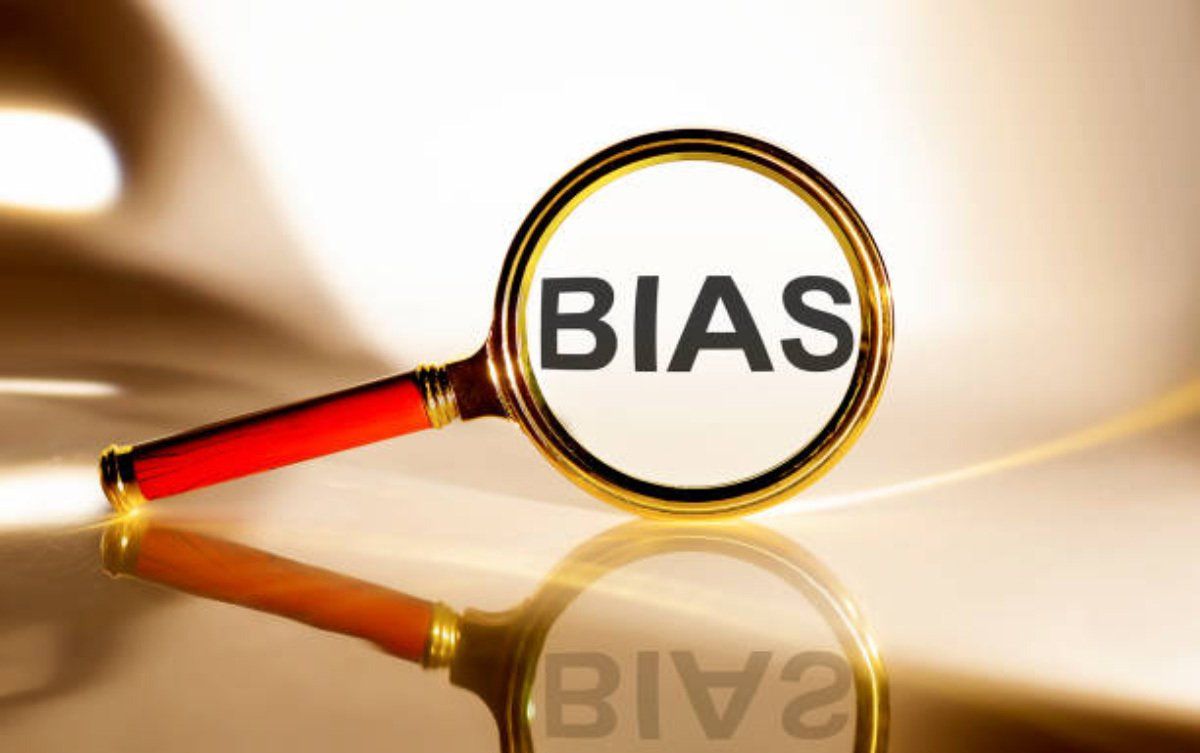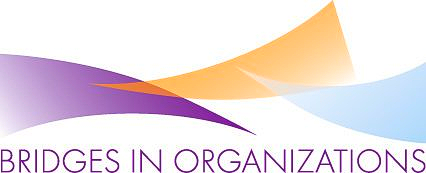ConsciousnessWorks™ starts from the premise all action is a result of the attention and kind of energy we put into performing action.
How Unconscious Bias Shows Up in Coaching
Organizational Tools and Guides for Change

By Kanu Kogod
•
23 Feb, 2021
You have probably heard the term trigger reactions as a result of microaggressions, insults and the re-sparking of a past trauma because of something someone has said or done. Trigger reactions are automatic, emotional expressions. A situation, a person or a place can cause the emotional reaction to arise. Triggers are the external event and the startle, surprise or shock you feel is your first internal response to the trigger. On the other hand, blink reactions, a term coined by Malcolm Gladwell, describe how we can judge someone on our first impression of them, perhaps in less than a minute after seeing them. Blink reactions describe our ability to mentally process data, sometimes automatically and unconsciously, and they can often be accurate in being able to read a pattern or make a diagnosis quickly. Even so, they can also create snap judgements about another based on their gender, race, ethnicity or physical appearance. Both trigger reactions and blink reactions describe what happens in the limbic center of the brain as we assess safety or familiarity. It’s not until we can pause and step back from these unconscious reactions that the prefrontal brain can go to work and figure out what caused our reaction. We can reflect on the emotional reactions we felt with a troublesome trigger such as anger, fear, frustration, or disappointment and what exactly we might have said or done differently. And with blink reactions, we can look at our past experiences and what characteristics or details might have ignited the blink reaction. While all this reflection is good, it doesn’t necessarily get us into a pre-frontal cortex response very quickly. I believe, with attention to energy, we can develop a new way of socially interacting with almost anyone in the situations we encounter. If we can go behind the curtain of drama to see the energy in every situation, both ours and the people we encounter, we can build in a mindful response in the moment.

By Kanu Kogod, PhD, MCC
•
18 Feb, 2021
Culture is the acquired knowledge that people use to generate behavior and interpret experience. Often called our shared design for living, culture is also dynamic, changeable, and contagious. Think of culture like a river of interpretations we land in and flow with- so much so that swimming in the river becomes transparent. For those immersed in it, it is little more than a background of obviousness allowing us to get on with the business of life. Have you heard the story of two fish swimming in the ocean? One fish says to the others, “How’s the water today?” The other replies, “What water?” Let’s say you are in a culture structured with a clear hierarchy of power at the top where decisions that affect the whole organization are hampered by limiting beliefs and assumptions. Let’s also say you don’t sit in the C-suite, but you want to influence an outcome to change the way business gets done. You want to make change that is do-able and practical no matter where you sit in the organization. Here are four simple, but not easy, low-hanging fruit influencers . The four influencers are: Stories told about the organization. Ways meetings are run. Methods for making decisions. Routine and outworn work habits for getting work done. The key to success is to focus on the one influencer that is going to give you the highest return and lowest risk of failure in your organization. What works and what is possible will become evident when you focus on your highest points of pain.

By Kanu Kogod
•
08 Feb, 2021
Since the pandemic began, you may have noticed you have a lot of pent- up energy with no productive way to use it. You want to make a change in the world, in your organization or in your family but now doesn’t seem to be the time to change anything. To make a bigger contribution, you need the energy to “just do it.” With all the demands for juggling work, home life and keeping everyone safe, (and perhaps entertained), it’s no wonder moving forward to make a bigger contribution is met with so many obstacles. Energy is behind all forms in the universe. It is neither positive nor negative and it can be expressed in infinite ways. Our emotions are energy and they can lead us toward action or caught in an endless spiral of focus – distraction- focus- distraction. You know the cycle- you are working on a project and you have to write a report, so you go scrolling through google. “But wait” you say as your attention is caught by a funny cat video or another article on a completely unrelated topic. Just then your phone dings with a text and you listen to that. Then you have to re-focus and refresh again and the cycle continues. Where our attention goes, energy follows. Where do you want to consciously focus your energy? Energetic Imprints Think of energies like flavors- some energy flavors are like a warm chocolate chip cookie and feel comforting. Others are like a hot pepper, spicy burrito and shock you into awareness of the taste. If you like these flavors, they attract you or “ pull ” you toward the flavor you desire. Other flavors, like bitter herbs may repel you so you want to “ push ” them away. Or you may try a new flavor and immediately want to be done with it so you “ stop ” to wash that flavor away. Sometimes we try some new food like sushi or pho and find that these new flavors are okay so we “ allow ” the flavor until it becomes familiar and we start to choose it. These four energies- push, pull, stop and allow - are like our own “energetic imprint”- unique in the ways each of us expresses them. They are behind and intertwined with all our choices, our biases and our circumstances in life. Our “energetic imprint” shows up in the way we move in the world, the emotions most familiar to us and the kinds of conversations that are available to us- both the voices in our own minds and in the ways we socially interact with others. Once we really look at our familiar energetic imprint, we cannot unsee it. We know when we are too pushy and demanding or too controlling of others ( stop energy) even though we might not want to admit it. We know when we are too tolerant of others’ poor behavior (too much allow energy) and we know when we are resilient and flexible to go with the flow (neutral allow energy) and withdraw when it feels right ( stop energy). Our usual ways of being in the world, in other words our fallback energies, may feel out of whack as we find ourselves more isolated, uncomfortable, disconnected and exhausted from the limiting circumstances we are in. Ask yourself, “Who am I now in a way that I have never know before?” If you have typically relied on push and stop energy, get curious to notice how you might be better off to shift your energy to using more pull energy to attract people and situations which are more conducive to building connection and trusting relationships. You might want to cultivate more allow energy so you can relax into accepting your circumstances just as they are. Whatever You Focus on Expands Where does all that pent-up pandemic energy go? For many of us, worry over the future. Too much energy is going toward anxiety. We worry for ourselves, our loved ones and our country. We mistakenly think that if we think about all the situations we worry about, we can somehow control them. Distraction becomes a way to deal with anxiety and uncertainty. During the pandemic, if you have found your energetic imprint to be out of whack because you can’t push forward like you have done in the past or you can’t pull away from heavy thoughts or feelings, try an antidote. Focus on allow energy. Take a few moments now to allow yourself time to reflect. Peace is the cultivation of acceptance – you have to work at accepting what you can’t control. It sounds crazy to work at peace so start with the following guidance. Ask yourself, “What am I resisting that I cannot change and what am I at peace about now? What aspects of my life can I just allow for now?” Let go of the resistance for now to focus on acceptance. Let yourself settle into a feeling of allowing things to be just as they are. Let the feeling of allow be in every cell of your body knowing that your body has its own innate intelligence to keep breathing, digesting, adjusting to temperature and posture and so on. Trust that you can find the allow energy within yourself-even if it’s just for 5 minutes while you are doing this practice of reflection. Start by choosing one of the following questions for reflection: Who am I now in a way I have never known before? What new capacities can I develop in this time of the Pandemic Pause? What is the contribution I want to offer for making this world a better place? What energies- push , pull , stop and allow - will best prepare me for the times ahead? Once you are clear on the reflection, let the full feeling of allow energy settle within you. Let it expand by repeating slowly trust as you inhale and allow as you exhale. Focus on taking deep inhalations as you say to yourself trust and full exhalations as you say to yourself allow . Pause at the end of each exhalation for 6 seconds to let the space between breaths fill with allow energy. Inhale trust, exhale allow , pause feeling allow energy expanding within you before you take your next inhalation. Do this breathing exercise 10 times with your eyes closed at the start of each day or whenever you notice yourself feeling distracted. When you slowly open your eyes after 10 breaths, where your full attention has been on each breath, notice if you have settled into a space of more peace. More acceptance. Take the feeling of trust and allow into the rest of your day. Remind yourself that there are some circumstances in your life it might be best to accept and that you are cultivating adaptability and resilience every time you do this practice. Now that you have given yourself permission to allow , ask yourself, “Where do I want all that pent-up pandemic energy to go?”

